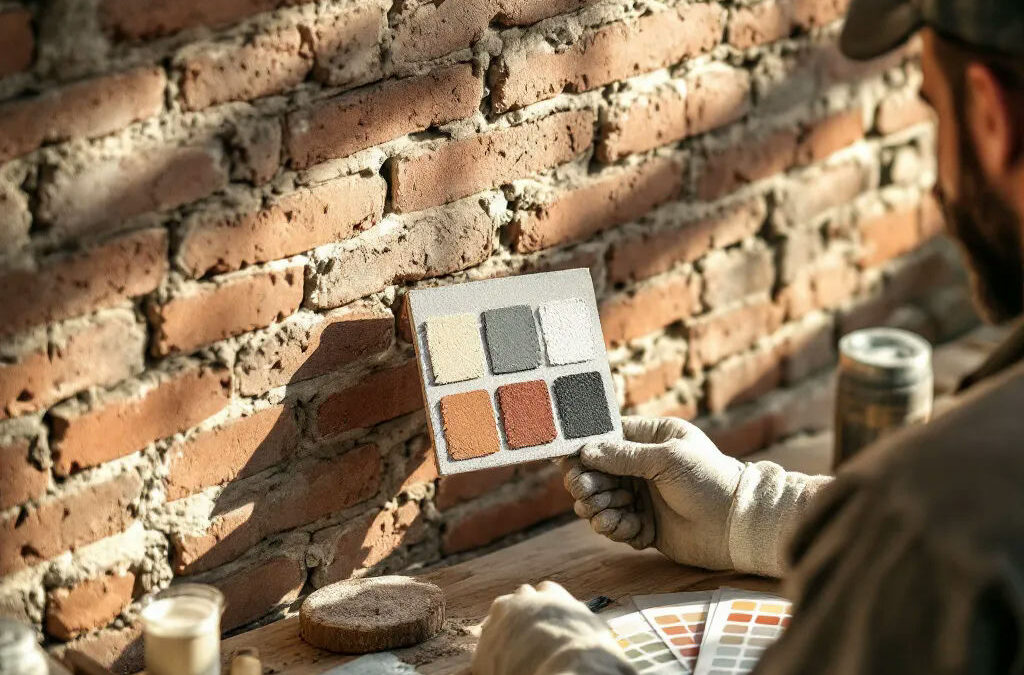Introduction
Matching the mortar color in brick repair is crucial for achieving a seamless look in your masonry projects. An accurate color match not only enhances the aesthetic appeal of your bricks but also ensures that repairs blend with the existing structure. Proper brick maintenance and repair contribute significantly to the longevity and resilience of your masonry, ultimately protecting your investment.
Understanding Mortar Composition
To effectively match mortar color, it’s vital to understand its composition. Mortar typically consists of three main ingredients: cement, lime, and sand. Each ingredient plays a crucial role in determining the final color and texture of the mortar, as variations in the ratios and qualities of these materials can lead to distinct color outcomes.
Overview of Common Mortar Ingredients
- Cement: A key binding agent that influences the strength and color of the mortar.
- Lime: Adds workability and contributes to a lighter hue in mortar blends.
- Sand: Varies widely in color and texture, directly impacting the overall appearance of the finished product.
Factors Influencing Mortar Color
Age of Existing Mortar
The age of the existing mortar can significantly alter its color due to environmental exposure and weathering. Over time, exposure to sunlight, moisture, and other elements can fade or alter the appearance of mortar, leading to discrepancies in color.
Environmental Effects
Weathering and UV exposure can have a profound effect on the color of the mortar, causing it to change shade and texture. Pay attention to how the bricks and mortar have aged together, as this will inform your color-matching strategy.
Variations in Brick Materials
Different types of bricks can exhibit a variety of colors and textures, further complicating the color-matching process. Understanding your existing brick’s material characteristics will help guide your selection of the appropriate mortar that complements the overall look.
Steps to Match Mortar Color
Assessing Existing Mortar
Start by evaluating the current mortar to determine its color, texture, and consistency. Use tools such as a color chart and smartphone apps for better accuracy. Pay special attention to the environment surrounding your bricks to get an accurate reading of the existing mortar figure.
Choosing the Right Mortar
Select the appropriate type of mortar based on your requirements. Materials like Portland cement or lime-based mortar each offer specific benefits. Additionally, consider whether you need a pre-mixed solution or if a custom blend would yield a better color match.
For guidance on choosing materials, refer to our article on how to choose the right concrete mix for your commercial project.
Creating a Mortar Sample
Mix small batches of mortar to create a sample that closely resembles the existing mortar. It’s essential to take your time to achieve the right consistency and color by carefully measuring your ingredients. Experimenting with different ratios can help hone in on the ideal match.
Testing the Color
Once you have created a sample, testing the color is crucial. Allow the mortar to cure for the recommended timeframe as this can significantly affect the final color. It’s important to compare the wet mortar to its dried state, as the two can look quite different.
Tools and Supplies Needed
Having the right tools can make all the difference in your brick repair process. Essential tools for brick repair include a mortar mixer, trowel, and a color matching chart.
Recommended Brands
Look for high-quality brands of mortar and additives specifically designed for color matching. These brands often provide reliable performance and accurate results, ensuring that your efforts lead to a successful and aesthetically pleasing outcome.
Tips for Successful Brick Repair
Applying new mortar requires technique and precision. Use a trowel to ensure clean lines and finishes, which are essential for achieving a professional look. Additionally, understanding the proper curing and drying times will ensure that your repairs are durable and long-lasting. Learn more about curing times for concrete which also apply to mortar work.
Common Mistakes to Avoid
While working on brick repairs, certain pitfalls can hinder your success. Ignoring the color of surrounding bricks can lead to stark contrasts that detract from the overall appearance. Not testing your samples adequately or selecting the wrong type of mortar can also result in an unsatisfactory outcome.
For more expert tips, see our guide on the top 7 mistakes to avoid in concrete construction.
Conclusion
In summary, matching mortar color for brick repairs is a meticulous process that requires attention to detail and proper technique. Whether you are a DIY enthusiast or a professional, these steps and tips can guide you toward achieving a flawless finish. If you find yourself feeling overwhelmed, don’t hesitate to call us at 916-562-2345 to get a quote. Our team of professionals is ready to help ensure your brick repairs are handled with expertise every step of the way.


